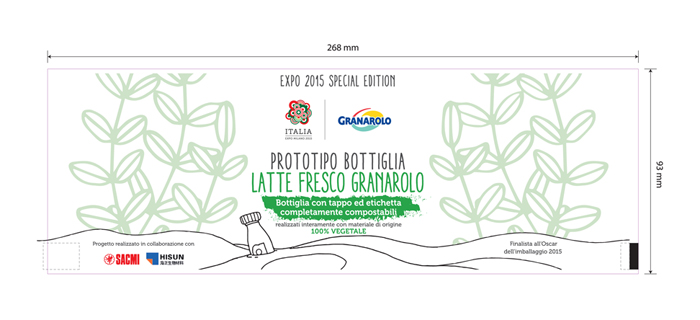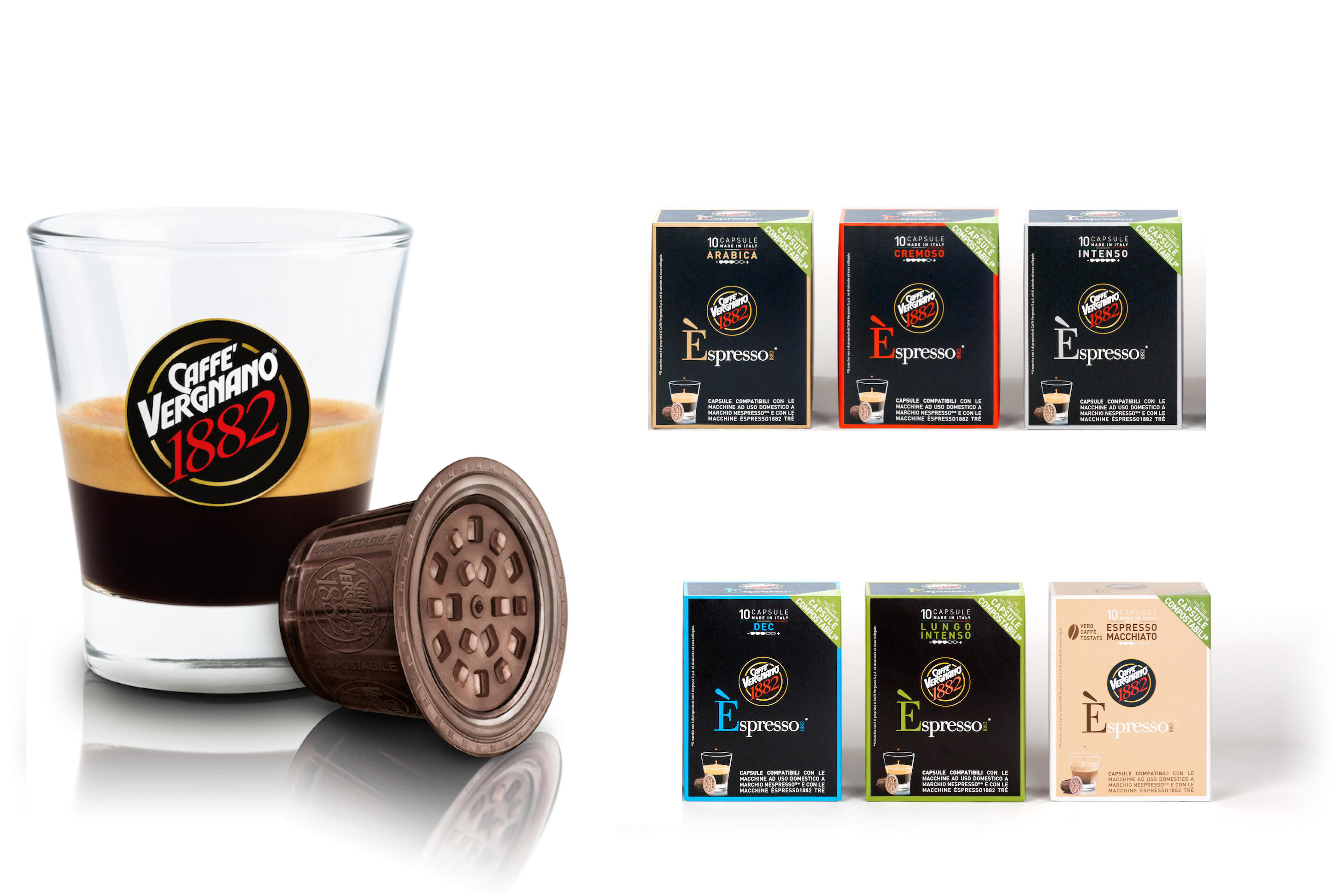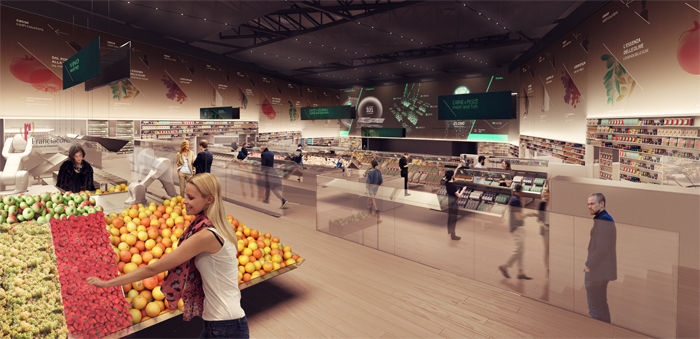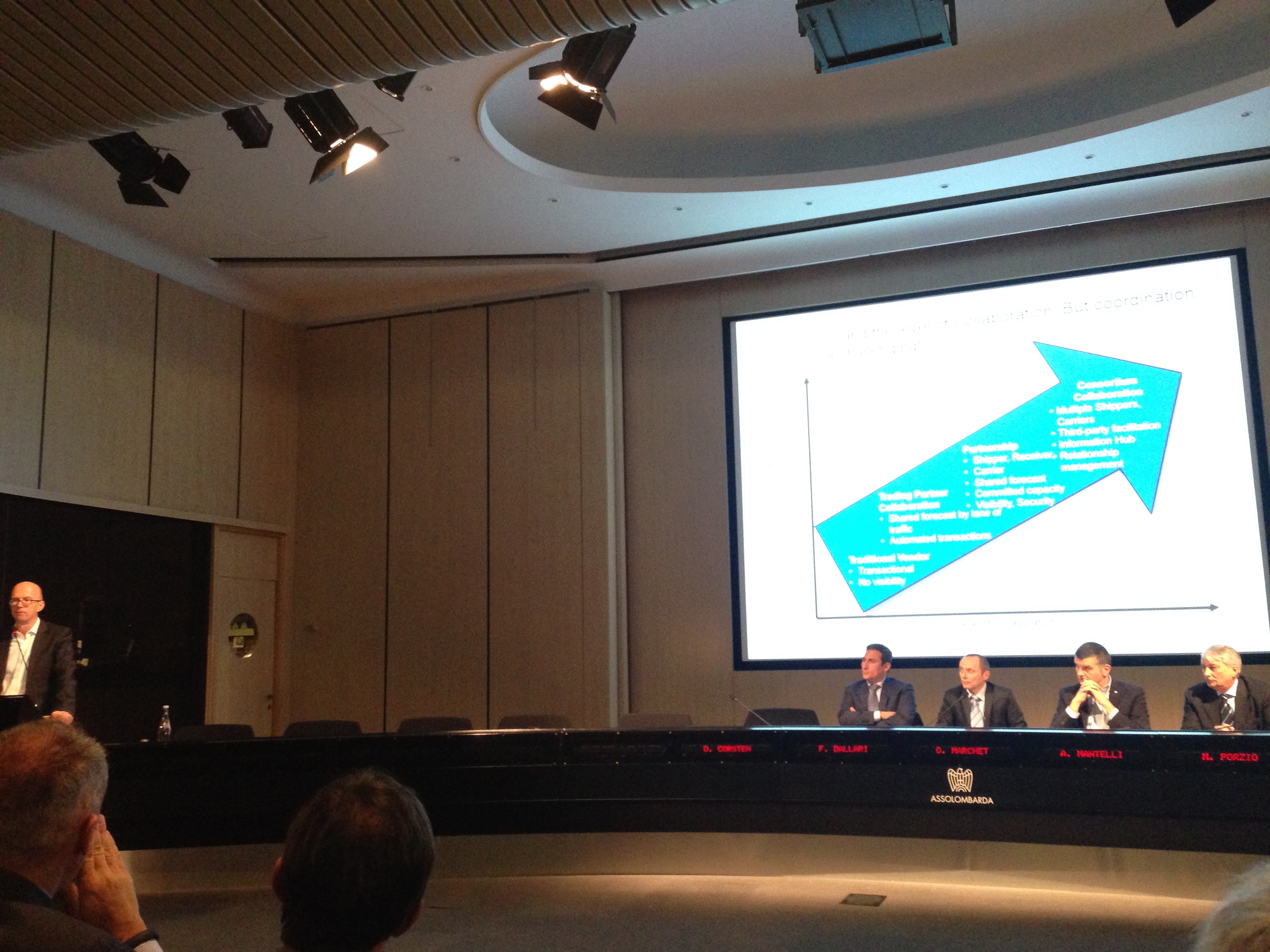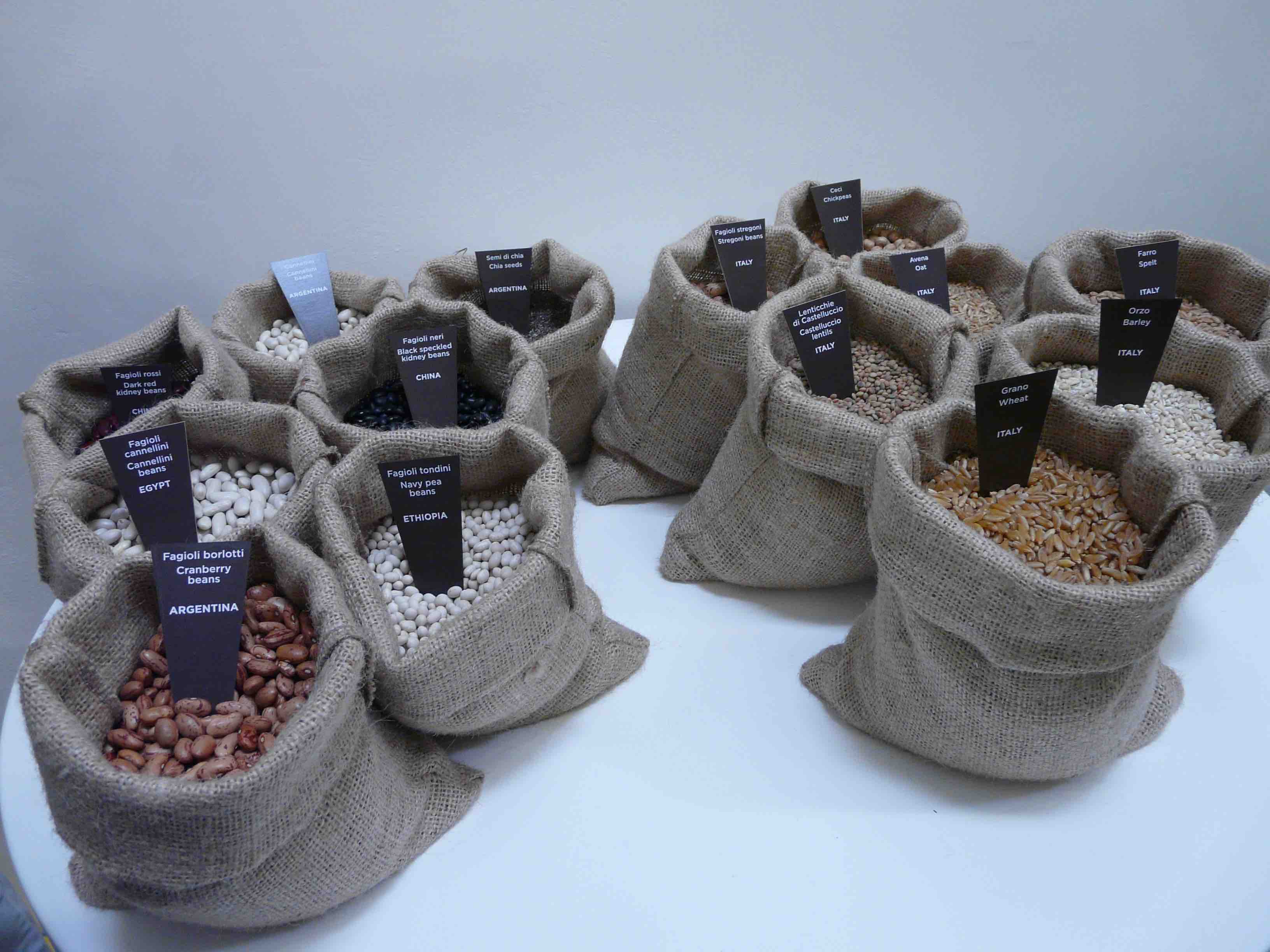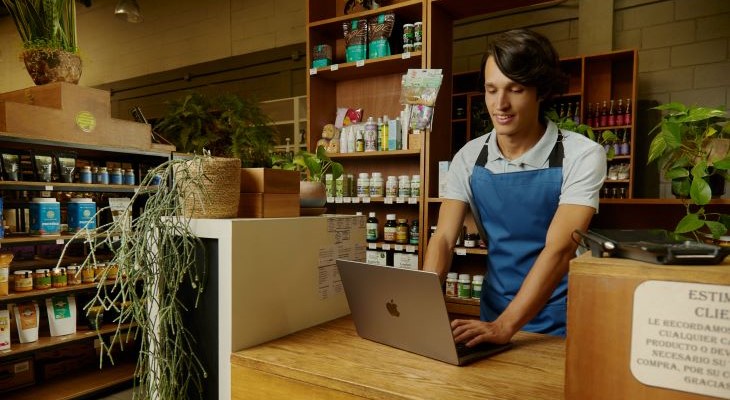 A milk bottle compostable in 12 weeks. This is the prototype that Granarolo is presenting for the first time at Expo in a special edition. Granarolo has chosen to use a bottle consisting of 100% Cassava, which has the potential to decompose into compost in 12 weeks. The choice of using Cassava is also ethical: the material does not derive from plants used to meet nutrition requirements and therefore does not affect the human food chain. The first Granarolo compostable bottle is also among the finalists of the Oscar dell’Imballaggio 2015
A milk bottle compostable in 12 weeks. This is the prototype that Granarolo is presenting for the first time at Expo in a special edition. Granarolo has chosen to use a bottle consisting of 100% Cassava, which has the potential to decompose into compost in 12 weeks. The choice of using Cassava is also ethical: the material does not derive from plants used to meet nutrition requirements and therefore does not affect the human food chain. The first Granarolo compostable bottle is also among the finalists of the Oscar dell’Imballaggio 2015
Tag: Sustainability
Expo effect: from Granarolo the first 100% compostable bottle
From Caffè Vergnano the first line of compostable compatible capsules
Caffè Vergnano will be present on the shelves of Italian grocery stores with the Èspresso1882 line of compostable capsules compatible with Nespresso domestic machines and with Èspresso1882 TRÈ machines.
The new capsules represent Caffè Vergnano’s response to the issue of the amount of waste resulting from the growing consumption of portioned coffee. While the portioned market indeed represents a great growth opportunity, it is also true that the environmental impact resulting from the use of capsules can be greater compared to the consumption of mocha or pod coffee.
The new Espresso 1882 compostables will replace the existing range on the shelves: the packages currently in distribution will be gradually replaced with the new compostable line.

“We have always believed in the capsule segment, anticipating trends and being the first to launch the Nespresso compatible capsule, today the market leader”, says Franco Vergnano, CEO of Caffè Vergnano, “From the beginning we have focused on innovation. Today even more so with a concrete project to protect the environment”.
The capsules will be the first on the market to be “OK Compost” certified by Vinçotte (an internationally recognised agency) and able to be disposed of in the organic bin without the need to separate the casing from the coffee.
The Èspresso 1882 range is available in 4 versions: Arabica, Cremoso, Intenso and Dec, plus the Espresso macchiato product.
The Coop Future Food District at Expo 2015
The day after the visit of the Prime Minister, Matteo Renzi, to the construction site of Expo 2015, the countdown has now started and the “magic of Expo”, as the commissioner Giuseppe Sala puts it, begins to unfold. Part of this, “the challenge of the most interesting content”, is the Future Food District where technology supports nutrition: 6,500 square metres in the heart of the exhibition site between the Cardo and the Decumano, an area resulting from the collaboration between Coop, MIT Senseable City Lab and Carlo Ratti Associates.
[Not a valid template]
It is the Chairman of Coop who explains the reasons for the involvement of Coop in Expo, after the initial doubts, an involvement worth 15 million euros of investment in the construction and operation of what will be not only an idea of the supermarket of the future, but “an opportunity to discuss the contents that belong to the coop system: good and safe food for everyone. The challenge for us is not only technical and financial, but also social. In Expo we see the opportunity for the country to make a quantum leap and we believe in it. It’s a tough challenge – says Pedroni – because the special Expo project was the construction of a supermarket that works: a machine of tomorrow that must be a machine of today”. And in fact it will be a working store with Coop staff.
But be careful. We must not confuse the supermarket of the future with a forecast. “Forecasts are always a gamble and are almost never correct – adds Carlo Ratti -. Experimenting new things useful to build the future is something quite different. And this is also the sense of the use of technology: trying out new ideas. Some will work, some will not, but they will still have shown us the way to build the future”.
The idea behind the Supermarket of the Future is that of a social market, an open square, a mix of history, tradition and future, a place of exchange between people, not only of goods but also of knowledge and information. “Cultural exchange has always been a distinctive feature of commerce – adds Pedroni – and our supermarkets have perhaps become overly-functional machines where this connotation of the market square has been lost”. It will be a place of encounter and exchange between producers and consumers, in which the vertical barriers will give way to a horizontal landscape facilitating interaction, a reference to the original markets. Inside the layout is divided into five streets dedicated to as many food industries. The idea came about in Coop before our adhesion to Expo Milano 2015 from an innovation contest in which 80 employees under 35 years of age took part.
“The original 2013 project, called GeoCoop, was based on the direct experience of a group of young employees who emphasised valuesdear to Coop, such as transparency and authenticity, essential for conscious purchasing, necessary today but even more so tomorrow. Valuesthat we believe to be increasingly shared – continues Pedroni -. What you will visit therefore will not be a hyper-technological pavilion where technology is an end in itself. We at Coop were interested in going in the opposite direction where technology is useful, at the service of man. If for example in the Exhibition Area the vision of the prototypes of sea farms will make one reflect on a planet where the earth will be infinitely poorer than today, in the Supermarket of the future the food industry streets will communicate at a glance information on product processing: starting from fresh produce all the way to products with the highest degree of transformation.
But the Future Food District (FFD) will also host scenarios of what we will eat. The Exhibition Area is dedicating a space, in collaboration with the Milan Humanitarian Society, where it will be possible to see the first edible products derived from more than 1,900 species of insects on which today about 2 billion people feed themselves; in addition, in the square there will be prototypes and installations aimed at exploring a number of innovative technologies in the field of urban agriculture and food and energy production. Today exceptions, tomorrow normality.
This is the case of the Vertical Farm based on an ENEA project: two glass walls, 4 metres high, and hydroponics on multiple levels, capable of producing for the six months of Expo various types of vegetables; and of the algae Canopy, apparently a simple roof, in reality a complex solution of water and microalgae able to produce biomass with possible applications in the agri-environmental sector. Already from the outside, starting from the square, visitors to this Thematic Area will encounter numerous examples of a sustainable future.
€ 750 million less in transport costs with collaborative logistics
 In an industry such as the consumer industry that handles approx. 3 billion parcels each year, collaborative logistics management has an directly measurable impact in terms of efficiency and sustainability. According to data presented yesterday at the conference “Collaborative logistics: an increasingly strategic lever” organised in Milan by GS1 Italy | Indicod-Ecr the potential savings in the entire consumer supply chain with efficient loading units and trip saturation close to 100% is approximately 750 million euros with 600 million kilometres travelled less and a reduction in CO2 emissions of 47%, equal to 510 thousand tonnes per year.
In an industry such as the consumer industry that handles approx. 3 billion parcels each year, collaborative logistics management has an directly measurable impact in terms of efficiency and sustainability. According to data presented yesterday at the conference “Collaborative logistics: an increasingly strategic lever” organised in Milan by GS1 Italy | Indicod-Ecr the potential savings in the entire consumer supply chain with efficient loading units and trip saturation close to 100% is approximately 750 million euros with 600 million kilometres travelled less and a reduction in CO2 emissions of 47%, equal to 510 thousand tonnes per year.
Results that recognise in loading unit efficiency and vehicle saturation the two “collaborative” levers on which the Italian consumer supply chain must focus if it wants to further reduce the industry-distribution system costs, to the benefit of the consumer.
“These are important numbers for consumer companies and for the entire national system”, said Stefano Agostini, Chairman and CEO of Sanpellegrino Nestlé Waters and Director of GS1 Italy | Indicod-Ecr, in his opening speech. “A change of mentality is, however, necessary, we must also have the courage to change and the only way is to discuss with the customer, with the consumer”.
These numbers also summarise the value of supply chain collaboration in logistics and are a reminder of the much wider benefits which, according to Daniel Corsten, Professor at the IE Business School in Madrid, the Italian consumer industry could reap from good Ecr practices to overcome the fragmentation that characterises it. As long as their implementation, says Corsten, is based on a solid alignment of objectives and sound coordination mechanisms.
“Supply chain collaboration in fact requires the company perimeter to be overcome”, said Silvia Scalia, Ecr Coordinator for Italy of GS1 Italy | Indicod – Ecr”and the adoption of models for sharing processes among all industry players. Principles that have always been adopted by the companies participating in Ecr Italy, making the implementation of innovative solutions and operational tools that we are presenting today possible and that will facilitate good practices in collaborative logistics”.
The reference is to the results of the research activities that Ecr Italy has carried out in collaboration with University centres represented by Fabrizio Dallari, Director of the Research Centre on Logistics at the LIUC Cattaneo University, and by Gino Marchet, Professor of Logistics at the Politecnico di Milano:
- Mapping of logistics flows: a study of the phenomena that characterise the logistics of the Italian consumer system and a photograph of the logistics flows and their morphology, the quantification of their size a specific analysis on the saturation of vehicles, both in plan and in volume.
- Analysis of the costs of non-optimisation: a quantification of the costs of the order to delivery process which highlighted the cost differentials between different logistic practices and reorder models, and has produced a veritable Simulator of Optimal Industry Reordering – SIRIO. – a tool to estimate the cost differential between different reordering hypotheses for a given product.
- Logistics atlas: an updated geographical map and a survey of the main logistics hubs – over 1,000 distribution and storage centres of consumer food goods managed by logistics operators in Italy, with the objective of providing an overview of the national distribution network and highlighting opportunities for optimisation along the supply chain and in transport and asset sharing.
Pedon Group winner of the 2014 Assiteca award for the approach to foreign markets

The Pedon Group has won the prestigious 2014 Assiteca award for the Large Companies category, as an example of excellence for its strategy towards exports and ability to take on the risks that derive from operating in foreign markets.
“We are truly honoured to have received this recognition that acknowledges our activities in foreign markets – said Remo Pedon, CEO of the brand with the same name that recently celebrated its 30th anniversary – confirming the validity of our industrial and commercial strategy. The value chain that we have created allows us to increase our market share while maintaining a distinctive position”.
Distinctive point and strength of the Pedon Group, today one of the leading global players in the cereal and legume processing, packaging and distribution market, is the global procurement network which, through the Acos Division, manages to ensure constantly high quality levels and total control of the supply chains with its factories. The business model of the Pedon Group is characterised by vertical integration of the production chain, from field to shelf. A model implemented in Italy and replicated in several countries that has allowed the company to become a leader in cereals and legumes in the span of just a single generation.
“In Ethiopia alone – the CEO told inStore – we work with 20 thousand smallholders, whose production we collect and seeds we provide, to guarantee constant quality of the next harvest. Soon we will be directly involved in agricultural production: in Mozambique we are concluding an agreement for the concession of areas for planting legume crops. And we will also do the same in Argentina, always respecting the local populations and with the sole objective of ensuring consumer quality”.
The Pedon Group was proclaimed winner following the vote by the jury on Tuesday, December 2, at the premises of the Sole 24 Ore during the Conference “Export Excellence: strategies, plans and safeguards”.
Now in its fifth edition, the Assiteca award, which recognises the best practices of Italian companies in risk management, is dedicated to Export Excellence. The Technical Committee identified the Export Champions, i.e. the Italian companies, large and small, which in recent years have managed to grow by developing their business in foreign markets, often in complex geographies, facing the risks that this entails.

